Software Development Life Cycle (SDLC) is a process that produces software with the highest quality and lowest cost in a short amount of time. This process divides the development process into tasks for different teams. SDLC helps the companies achieve their target goals by identifying the errors in the system and fixing them to run smoothly and error-free. It also helps improve the development process. It allows a smooth analysis of each step. This helps companies reach the maximum potential in each phase. This life cycle basically defines each task needed to create a software application. This would help reduce waste—time and money. This would also increase the efficiency of the process.
Planning
The first phase is the planning phase. This phase is where project leaders review the terms of the project. This includes creating a timetable with goals, setting a budget for labor and materials, and building teams and a leadership structure. This phase can also include feedback from stakeholders. Stakeholders are the people who benefit from the application. Aside from feedback from stakeholders, feedback from potential customers, developers, subject matter experts, and sales reps is also important. This phase defines the scope and purpose of the application. It maps out the course and supplies the team. This helps the team create the software. There are also limitations to help keep the project from straying from its original purpose.
Define Requirements
This phase determines the function of the application and its requirements. A social media application is an example wherein it requires the ability to connect with friends. This phase also includes determining the resources needed for the project. An example is a team that would want to develop software to control a custom manufacturing machine. In this situation, the machine is a requirement in the process.
Design and Prototyping
This phase models the way a software application will work. There are some aspects of the design:
- The architecture specifies the programming language, industry practices, overall design, and any use of templates.
- User Interface defines how users interact with the software and how the software responds.
- Platforms define the platforms where the software will run—Apple, Android, Windows, etc.
- Programming includes methods of problem-solving and doing tasks in the application.
- Communications define the methods where the application can communicate with other assets.
- Security defines the measures taken to secure the application. This may include SSL traffic encryption, password protection, and secure storage of user credentials.
Prototyping can be part of this phase. A prototype is a preliminary version of the software in the Iterative software development model. It shows a basic idea of how the application will look and work. Prototypes can be presented to the stakeholders. Their feedback can help improve the application. It’s more convenient to make changes in the Prototype phase than to rewrite a code to make changes in the Development phase.
Software Development
This is the phase where the actual writing of the program begins. Using an Access Control or Source Code Management application in this phase will help developers track changes to the code. These systems also help ensure compatibility between different team projects. They also make sure to meet their target goals.
This process includes many other tasks. Many developers need to work on their skills or work as a team. Finding and fixing errors is very important. Tasks often delay the development process. An example is when waiting for test results or compiling code that so that an application can run. SDLC expects these delays. This will allow developers to work on other tasks meanwhile.
Documentation can either be a formal or informal process. For formal process, this includes a user guide for the application. For informal process, this includes comments in the source code. These comments explain the developer’s reason for using a certain procedure. Even companies that aim to create uncomplicated software benefit from the documentation. Documentation is like a guide to users. They contain the application’s basic features that display on the first launch. It can be shown through video tutorials for complex tasks, written documentation like user guides and troubleshooting guides, and FAQs to help users solve problems or technical questions.
Testing
It’s always important to test a product before making it available. The same goes for applications. Its purpose is to make sure that every function works correctly. Most of the testing can be automated. While other tests require a specific environment. Different parts of the application should also be tested to ensure that they work perfectly together. This is known as a performance test to reduce any lags in processing. This phase helps reduce the number of bugs and glitches that users may encounter. This will lead to higher user satisfaction.
Deployment
This phase is where the application is available to users. Companies usually prefer to automate this phase. This can be as simple as downloading a link on the company website or downloading an application on a smartphone. Deployment can also be complex. An example is upgrading a company-wide database to a newly-developed application. This takes more time and effort because there are several other systems the database uses.
Operations and Maintenance
This phase is where the cycle almost ends. The development of the application is done and is already being used. This phase is still important because it is where users discover bugs that weren’t found during testing. These errors need to be fixed, which can produce new development cycles.
